El Salvador’s Only Travel Guide You Need For A Great Trip in 11 Easy Steps
- Destinations Americas
Cruisit Team
- August 14, 2022
- 0
- 4867
- 73 minutes read
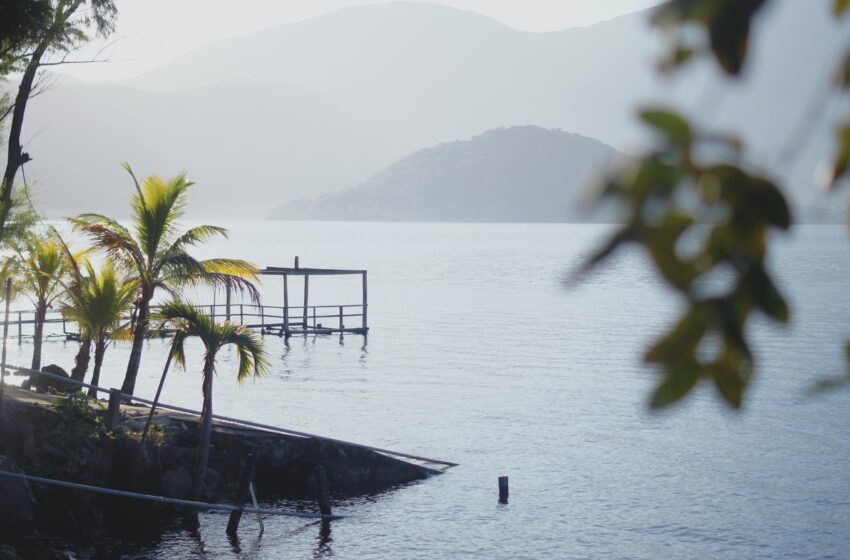
El Salvador’s Background
El Salvador was populated by a mix of indigenous Mesoamerican people from as far back as 11 AD, namely the Cuzcatlecs, as well as the Lenca and Maya before the arrival of the Europeans. However, the Pipil, whose civilization resembled that of the Aztecs in Mexico, dominated the region. Sonsonate and Ahuachapán are two of the numerous big cities created by indigenous people, and among the pre-Columbian ruins left behind can be seen in Tazumal, Pampe, El Trapito, and San Andrés. Cuscatlán, which means “Land of the Jewel,” was the name the Pipil gave to their region. The expedition led by Pedro de Alvarado in 1524, was the start of the Spanish colonization of El Salvador. The conquerors were faced with fierce opposition but were met by superior tactics and weaponry, which enabled the Spaniards to advance into Cuscatlán. By 1525 a Spanish settlement called San Salvador was constructed near the city, but the opposition dragged on until 1528 when the settlement was reestablished for good this time.
San Salvador served as the capital of most of El Salvador except for territory to the west known as Izalcos by the Pipil, was constituted as an autonomous province of Sonsonate, and would not become a part of El Salvador until 1823. El Salvador was the agricultural center of Guatemala. Although the majority of the population was forced to rely on subsistence farming, the more fortunate Spaniards found money in the export of a variety of native goods, many of which suffered “boom and bust” cycles. Cocoa for instance during the 16th century was what brought riches, but the following century was a period of stagnation. Increased indigo exports helped the economy recover in the 1700s, which developed sophisticated commercial agriculture established and run by prominent families, much to the dismay of the overworked indigenous people. But it was that indigo trade that lead to the works into Central American independence, and lengthy hostility towards Guatemalan merchants and ruling Guatemala.
In 1811, an arrested member of one of the planter families sparked a rebellion, led by José Matas Delgado, and others, but Spain’s control was restored by Guatemala’s captain-general. Another insurrection in 1814 led to a harsh sentence for one of the leaders, Manuel José Arce, costing him more than 4 years in jail. Later, Guatemala declared its independence from Spain in 1821 together with El Salvador. A Central American constitutional conference met in Guatemala City in 1823 and elected Delgado as president. He worked on a constitution, which formed a new state known as the Federal Republic of Central America, which consisted of Costa Rica, El Salvador, Guatemala, Honduras, and Nicaragua as well as the southern Mexican state of Chiapas, with José Arce becoming its first president in 1825. In 1839, El Salvador declared its independence from the Central American Federation. Years of unrest and political instability were part of the next century, and it wasn’t until 1992, after a 12-year civil war that claimed thousands of lives when the nation and leftist rebels signed a deal demanding military and political reforms.
El Salvador has had a history that has been far too painful for its little size. Despite having nearly totally rebuilt itself since the atrocities of the 1980s civil war, El Salvador remains the most dangerous country in Central America in terms of crime. However, the nation appears to be a country rife with street violence, MS-13, narcotics, and crime. But it’s just not the complete picture.
El Salvador is the smallest nation in Central America, with a total size of 21,041 square kilometers, packs a punch in a tiny package. It has access to the Pacific coast with tropical climates and highlands in the country’s interior with substantially colder temperatures. This underappreciated location appeals to anyone seeking to stray off the usual Central American tourism and immerse themselves in a different country with a zest for adventure. World-class surfing on lonely, dark-sand beaches; coffee plantations clinging to the slopes of mountains; charming flower-filled communities with mural-splattered houses; and majestic national parks may all be found here. Outside of the capital, San Salvador – a swaggering town – there are few people, so you’ll have plenty of room to take in all that El Salvador has to offer.
“A secluded, untouched, and unfrequented gem in Asia. Timor Boasts some of the best reefs to dive in, mountain regions to climb, and so much history to learn about from a Asia’s newest country“
El Salvador is a fantastic one-stop vacation, full of volcanoes, lush forests, and jagged highlands, as well as beautiful beaches and world-class waves that will delight the most ambitious surfers and sun lovers. Long, sandy beaches coveted by surfers for decades run south along the Costa del Sol to the Gulf of Fonseca, peppered with islands and bays to explore. Wander through coffee fields, take in the grandeur of the Ruta de las Flores, or simply relax and enjoy the daily show of Pacific sunsets in the west.
Most people have a love-hate relationship with San Salvador, the capital, although recent revitalization attempts are attracting more visitors. Beyond the city, there are other compelling reasons to go there. For instance, during Semana Santa, or Holy Week (Easter), a highly important holiday, gives you a chance to take part in some spectacular parades, celebrations, and festivities, especially experienced in the capital. An exciting period, full of markets, music, and friendly, welcoming people.
The northern hills around El Poy and Perqun are a trekker’s paradise; Cerro Verde National Park provides stunning, horizon-filling landscapes packed with hot springs and endless waterfalls; a challenging scramble across the smoking cinder cone of Izalco volcano rewards with stunning views of Lago de Coatepeque; and who could resist the allure of El Imposible National Park? There are several Mayan ruins that are sometimes missed. Joya de Cerén is one of the most stunning. The “Pompeii of the Americas” site has a Mayan settlement that was previously buried beneath layers of volcanic ash from a nearby eruption. Joya de Cerén’s completely preserved wattle and daub dwellings, replete with a Mayan steam chamber, or temazcal, and a shaman’s ceremonial headquarters, make it among the continent’s most remarkable archaeological sites.
The Pipil’s mingling with other tribes (mostly Lenca and Mayan) and European settlers is still visible in modern-day civilization, particularly Salvadoran cuisine. Although it incorporates European-introduced components like cheese and onions, Salvadoran cuisine still mainly relies on indigenous foods such as beans and corn. These are utilized in a range of dishes and sweets that Salvadorans eat on a daily basis.
There are traditional dishes that are exclusive to a single location in bigger countries, based on the ingredients that may be obtained nearby. In El Salvador, however, this is not the case. Because the country is so tiny, all of these favorite cuisines are eaten across the country, from the coast to the highlands. Fresh fish is an important component of numerous popular Salvadoran dishes, owing to the country’s proximity to the Pacific coast. However, unlike corn-based dishes, Salvadorans do not consume them on a daily basis.
To enjoy El Salvador the most, you will want to stay on the move in order to see and do as much as you can of what El Salvador has to offer for tourists. In this Cruisit El Salvador travel guide, we give you a plan that falls halfway in the middle, with a good mix of leisure and discovery. Enter the country and fully experience and explore this Central American dream destination. El Salvador’s trip plan that we provide below is best experienced in the country’s high season, but you can also enjoy the shoulder season too. Your Latin fantasies will come true, with warm days beside sapphire waters in the company of legend, and surrounded by lush forests and high-peaked mountains, not to mention hundreds of wildlife species to discover.
Also, in our travel guide to El Salvador, we will provide you with all the information you will need to navigate the country at ease. El Salvador’s highlights, tips, transportation, top places and attractions, a handcrafted itinerary in El Salvador, and more will be provided for you as you read through. If you are excited enough by now, let us dig right in!
- Visit Iglesia El Rosario, Central America’s best church.
- Tazumal and Joya de Ceren provide a glimpse into ancient Mayan life.
- Visit Lake Llopango, a former volcano that is now a freshwater lake, or its older sibling, Coatepeque Caldera.
- In Montecristo National Park, you may see rare Pumas, anteaters, spider monkeys, and Coyotes.
- Examine Puerta del Diablo.
- Visit the somber Museo de la Revolución Salvadorea in Perqun, then gallop off into the sunset on a horseback ride across the undulating hills of Juaya.
- Try to avoid the finely carved wooden chests at La Palma, an artisan town on the Honduran border.
- Potter surrounding Suchitoto, a colonial village.
- Hike around El Imposible, a beautifully named mountain forest in the west that’s ideal for bird viewing.
- Souvenirs may be purchased in San Salvador’s Mercado Cuartel.
- Learn to surf on Playa El Tunco’s black sand beaches.
- Save space for pupusas, wonderful maize-flour tortillas stuffed with shredded pig or cheese and black beans; El Salvador’s national cuisine.
- El Salvador is, unfortunately, teeming with street and violent crime, so avoid walking the streets at night, especially if you’re alone and especially if you’re a woman. Take a cab. Don’t show anything valuable, especially money. Keep your valuables concealed and secure.
- It is recommended to get shots against Hepatitis A and B, Typhoid, and any boosters. Malaria prevention is also recommended for rural trips.
- Cat calls should be avoided by women; if they are ignored, males typically lose interest.
- If you want to remain longer, you can help teach English or study Spanish at Centro de Intercambio y Solidaridad.
- If you’re not staying for long, you may want to brush up on some Spanish which will get really handy during your trip.
- When transporting, use caution and seek local guidance, and avoid walking at night.
- Backpackers who enjoy camping may do so on the grounds of various hostels across the nation for a fraction of the cost.
- Many hotels don’t have online reservation systems. In some cases, showing up and negotiating for a room is the only option. Arriving in the evening increases your chances of getting a lower rate.
- Over the previous 30 years, more than 98% of El Salvador’s woods have been deforested, with the remaining areas largely belonging to the Montecristo and El Imposible National Parks.
- El Salvador is a small country, but its tourism infrastructure makes interior travel more challenging than you may think. The public transportation system is affordable, although buses are sometimes packed and lack baggage racks.
Crime & Scams in El Salvador
El Salvador has one of Latin America’s highest crime rates. Violence between gangs is prevalent, and the typical targets are competing gang members or military and police. While the majority of gang violence takes place away from tourists and visitors, no site is fully safe.
Violent crime, such as armed robbery, homicide, and sexual assault, is a major worry in large parts of the country. Although gang violence varies by departamento (state) and municipio (municipality), places with greater crime rates are frequently located near lower crime areas or must be crossed to go from one to the other. Although local police may lack the capacity to respond effectively to significant criminal situations, resort locations tend to be better policed than metropolitan regions due to the concentration of resources.
Avoid downtown San Salvador, as well as areas of Soyapango, Apopoa and its environs on the city’s east side, and Mejicanos. These areas attract criminal activity and are not safe to visit. Apopa, San Salvador, Colon, Ilopango, Mejicanos, Ahuachapan, San Miguel, Santa Ana, and Tonacatepeque are more places to avoid.
Be vigilant, particularly if you are in public places used by foreigners, near official buildings, crowded attractions, or on public transportation. Avoid poor areas of the city. Take care on city streets, especially after dark or if you are on your own. Don’t carry large amounts of money or wear valuable watches or jewelry. Avoid using your mobile phone in the street.
Healthcare in El Salvador While Traveling
El Salvador’s public healthcare system is regarded as deplorable. Despite the fact that the healthcare system has a large number of hospitals, clinics, and care centers, the quality of care they give is judged inadequate. El Salvador’s private healthcare industry consists of clinics, general hospitals, and hospitals specialized in certain treatments, all of which provide acceptable care and employ qualified employees and are centered in the capital, San Salvador, and other major cities.
Before every trip, make sure you are up to date on all routine vaccinations. Among the key recommended vaccines globally are chickenpox (Varicella), diphtheria-tetanus-pertussis (DTP), influenza (flu), measles-mumps-rubella (MMR), polio, hepatitis, typhoid, and shingles. If you will be in contact with wildlife, you may want to consider getting a rabies vaccination.
When visiting El Salvador, you are legally required to purchase travel medical insurance. It is always important to have comprehensive medical coverage when traveling because you never know what you could encounter while overseas. You should make sure you have adequate travel health insurance and accessible funds to cover the cost of any medical treatment, evacuation, and repatriation.
Only eat foods that are cooked and served hot, avoid food that has been sitting on a buffet, and eat raw fruits and vegetables only if you have washed them in clean water or peeled them.
Only drink beverages from factory-sealed containers, avoid ice because it may have been made from unclean water, and only drink pasteurized milk.
Make sure to wash your hands often with soap and water for at least 20 seconds, especially after using the bathroom and before eating. If soap and water aren’t available, use an alcohol-based hand sanitizer that contains at least 60% alcohol. Also, keep your hands away from your face and mouth.
El Salvador enjoys a tropical climate that has wet and dry season. Temperatures in El Salvador fluctuate more by elevation than by season. The beaches and San Salvador may reach temperatures in the low 30s°C (high 80s°F) all year, with even greater heat waves in the summer, while the coldest mountains can drop to near freezing, with average temperatures ranging from 12°-23°C (54° to 73°F) all year. December is the coldest month, while May is the warmest.
The wet season in El Salvador lasts from May to October, while its dry season lasts from December to mid-March with a short transitional period in between. Sunny days are the norm even throughout the wet season. Thunderstorms are brief, but powerful, typically occurring late in the day. In general, the best time to visit El Salvador is between December and March, when the weather is mild and there is less possibility of rain.
Shoulder Season
The shoulder season in El Salvador is from mid-March to April and the month of November. These times are considered transitional and are good alternative to the high season. March and April are another busy time due to the Easter holy week (Semana Santa). Expect foreign visitors as well as Salvadorans on vacation. El Salvador’s hotels and beaches are filled with local tourists around Easter (Semana Santa), so book early.
The end of November is also an excellent time to visit El Salvador since it is considerably calmer – and cheaper – than the busy season, but the rains have stopped.
High (Peak) Season
El Salvador’s high season is from December to mid-March as well as Semana Santa (Holy Week). Prices can be higher at certain periods, but not necessarily. Some hotels do advertise discounts to compete; it simply depends on how busy the hotel anticipates being. In any case, you should book any nice hotel well in advance during these periods, or you won’t be able to get a room. Christmas and New Year’s are very popular times, so book reservations well in advance if you intend on coming during these times.
The best time to visit El Salvador during this period is December when the rainy season has just ended and the terrain is still lush and the air is fresh, clean, and dry, but also the coldest. Sunnier days, decreased humidity, and somewhat colder temperatures are forecast for January and February. From December to mid-March is the peak season in El Salvador and wildlife viewing is best done during this dry season, as several parks, notably Montecristo, are closed during the wet season.
Off-Season (Low Season)
The rainy season in El Salvador is the off season and lasts from May to October. Beginner surfers can enjoy the dry seasons gentle waves, but in the low season in El Salvador is great for pro surfers. During this time you can also go turtle viewing and see them lay their eggs, specifically from May to September. Their hatchlings start appearing eight weeks later. One of the greatest places to see them is on the beach in Jiquilisco Bay.
By late April or early May, temperatures begin to rise, and the rainy season begins. The rains will linger until early November, and certain national parks, such as Montecristo, may close during this period.
June to September are the wettest months, with September being the most rainy. Hurricanes are extremely infrequent in the nation since it is located on Central America’s Pacific coast rather than the Caribbean. Contrary to popular belief, Salvadorans refer to this hot, rainy season as invierno – winter.
Despite the rains, August is a very busy month in El Salvador, since it hosts some of the country’s largest festivities. Fiestas Agostinas in San Salvador, with parades, marching bands, and food booths, and the ‘Balls of Fire’ event in Nejapa, where fire throwers celebrate the eruption of a neighboring volcano – with frightening effects.
To enter El Salvador, you must have a passport and either a Salvadoran visa or a one-entry tourist card. For a $12 cost, you may get a tourist card from immigration authorities at the airport or seaport. The card is only good for 90 days. However, before traveling, ensure that your passport permits you to obtain a visa on arrival.
By Plane
El Salvador Foreign Airport (SAL) serves as the country’s primary airport and the point of entry for nearly all international aviation travelers. El Salvador’s major airport is Comalapa International Airport (El Salvador Internation). There are 29 airports worldwide with direct flights to San Salvador, distributed among 28 locations in 13 countries. There are currently 16 airlines that operate to San Salvador. Avianca operates the majority of flights to San Salvador, connecting 18 airports to SAL. That is over three times the amount paid by Aerolneas Mas, the second largest airline in terms of flight routes to San Salvador. Airlines such as Avianca, ANA, and United travel regularly between the United States and El Salvador. Spirit Airlines, Delta, Iberia, Volaris Costa Rica, American Airlines, TAG, Air Transat, and Aeromexico also fly to El Salvador.
You can fly directly into San Salvador (SAL) or into Guatemala City (GUA) and then take a bus to El Salvador, such as Tica Bus.
By Car
El Salvador has two neighboring nations, Guatemala and Honduras, from which you may cross land borders. However, be cautious because much of Latin America’s borders are rife with turmoil, drug trafficking, and cartels. So, before you start your journey, be sure you know where you’re crossing from.
By Bus
Buses go from Guatemala and Honduras to San Salvador, El Salvador. Turansa operates a bus from Tegucigalpa, Honduras to San Salvador that takes around 6 hours and costs $23. Cristóbal Colón Autobuses operates a bus service from Guatemala City to San Salvador that takes between 4 and 6 hours and costs roughly $23.
By Boat
El Salvador welcomes cruise ships and private yachts to dock. Recreational boats may visit three ports in the Gulf of Fonseca: Bahia del Sol, Barillas, and La Union, although the first two are the finest. La Union is mostly an industrial port with nothing to offer cruise vessels. Boats passing through the Gulf of Fonseca are likely to be intercepted and boarded by Navy patrol boats looking for valid zarpes. Be aware that the Gulf is bounded by three distinct nations. Because Acajulta is a maritime port, port officials prohibit cruise ships from arriving.
By Car
El Salvador is one of the simplest Central American nations to visit by car, with recently built, well-paved, and well-marked motorways traversing the length of the country from east to west and north to south. CA-1, commonly known as the Pan-American Highway or “Carretera Panamericana,” is the country’s principal highway, running from the western Guatemalan border to the eastern Honduran border through San Salvador. CA-2 travels along to the coast and is connected by three main north-south routes that traverse the length of the nation. However, as you leave the major highways, things begin to change. Secondary roads are typically unpaved. It is therefore preferable to rent a truck even during the dry season. During the rainy season, we recommend going for a four-wheel-drive since some roads are impassable with normal vehicles.
Avoid driving at night to reduce your chances of being robbed. When visiting major cities, it’s better to leave your car in your hotel’s parking lot and rely on buses and cabs; city streets are typically chaotic, crowded with people and sellers, and streets are rarely designated. These are not the roads you want to go while looking at a map. El Salvador’s highways are crowded with ancient jalopies traveling at half the posted speed, motorbikes puttering along on the shoulder, farmers walking with carts jutting a few feet into the road, and walkers only inches from the lane.
The official driving rules in El Salvador are substantially similar to those in North America. People drive on the right side of the road, and standard international signage indicates who has the right of way at city intersections. Seat belts are required, and speed restrictions apply in cities.
Nobody seems to notice. Both nations’ driving standards are weak and sloppy, with frequent speeding and fender benders. Keep an eye out for cars that turn without signaling and chaotic metropolitan traffic circles where everything happens. Huge potholes are common, particularly in rural town, where children make a job by filling these dangerous craters with dirt in return for coins from cars.
To drive in El Salvador you need a valid driver’s license, therefore it is suggested that you obtain an international license before traveling. Police checkpoints are common. Even if your automobile is blocking the road, you should never move it after an accident. If an accident results in an injury, both drivers are detained until the case is resolved, which might take several days.
The roads of El Salvador are one of the best in Central America. However, not all Salvadoran roads are in good condition. So, be prepared to experience poor-quality roads while driving in El Salvador.
By Taxi
Taxis are common in the country’s larger cities and are normally simple to find near each city’s main square; they’re safe to hail on the street, except at night, when your hotel should call one for you. Uber and other ridesharing applications are available and might be more convenient at times.
Smaller cities sometimes lack cabs, but many have tiny moto-taxis (called tuk -tuks), which are simply red, canvas-covered, three-wheeled motorbikes. Tuk tuks are frequently significantly less than taxis, sometimes costing as low as $25 for a few blocks, and you get the added benefit of feeling the wind in your hair.
By Bus
El Salvador is a simple and enjoyable nation to tour by bus. There are few areas in El Salvador that cannot be accessed by one of the country’s many decades-old, brilliantly painted former elementary school buses. Most metropolitan buses are priced between 25 and 35 cents, with few, if any, journeys within the nation costing more than $2. El Salvador’s bigger towns have separate bus terminals, but in smaller settlements, buses frequently arrive and depart from the main plaza. You may hail buses like a taxi in tiny towns and along many slow-moving routes simply raising your arm.
Buses in El Salvador serve as mobile marketplaces and charitable organizations. Expect vendors to join the train at each stop to offer fruit, bottled water, and dulces (candy). You’ll almost certainly come across brightly costumed clowns soliciting donations for various organisations. Though taking the bus in El Salvador is a fantastic way to get to know the country’s people and culture, stay on the main tourist routes specified in this book and avoid midnight bus travel to prevent any safety risks.
In El Salvador, go with the older buses. You may well be tempted to take one of the nation’s newer, more modern-looking buses, but these trips seldom have air conditioning, can fit just as many passengers, and have even less room than the earlier buses since they feature bucket seats rather than bench seats. Fortunately, the majority of buses that operate inside the country are of an older vintage. They are periodically repaired, painted bright colors, and embellished with religious motifs before being reintroduced into duty. These buses are crowded, hot, rough, and constantly stop, but they will bring you to your destination in elegance and luxury.
By Boat
There is a regular ferry service over Lago Suchitlán to Suchitoto, and ferries travel around the seas of La Unión, but there is no extra ferry service.
After getting your permit, you can dock around the shores of El Salvador, but you will be limited to the coastal regions only of course. Make sure you do your research before docking anywhere to make sure you are permitted to do so.
SIM Cards & Calls in El Salvador
In El Salvador, there are four mobile service companies that offer SIM cards to customers. The four mobile companies offer Salvadoran SIM cards for as cheap as $1 USD (Claro, Movistar, Tigo & Digicel). Tigo also sells additional beginning sets for as little as $5 USD. SIM cards are available for purchase at El/San Salvador International Airport. Most businesses offer 1GB and up to 2GB of data valid for 5 to 7 days for as little as $2, however Claro provides the finest deals with the longest SIM validity.
Alternatively, you may also get a prepaid eSim card from a company like Airalo, SIMCorner, HolaFly, or Nomad. All the providers offer data-only plans that may be used with an eSim-enabled phone, so make sure your phone is compatible. It is also possible to sign up for a Solis WiFi Hotspot. Check before you travel because they only serve select areas. Airalo provides the most extensive coverage of over 180 nations.
Local Internet & WiFi in El Salvador
El Salvador’s internet access has expanded dramatically year after year, although only around half of the population is online. El Salvador’s average internet speed is roughly 3 Mbps. Almost all hotels and lodging options include internet access and complimentary Wi-Fi as part of your stay. Check before making a reservation.
Top Places in El Salvador

Tazumal
Tazumal is El Salvador’s most spectacular Mayan ruin, initially populated around 5,000 BCE and abandoned in the 13th century, according to researchers. In the 1940s and 1950s, the architectural complex was excavated and extensively rebuilt, although much of the remains remain unexcavated. Tazumal is said to have been a significant trading town, and its name means “pyramid where the victims were burnt” in the K’iche’ language. Explore this huge site and learn about the Maya civilization’s history at the on-site museum.
Montecristo National Park
From the highest mountain is El Trifino, at 2,418m to the lowest valleys, this national park offers nature at its best. With a dense canopy of oak and laurel trees rising up to 30m overhead and mushrooms, lichens, and mosses running rampant across the forest floor, it appears to be a long-lost planet. Nonetheless, you can simply visit as part of a trip. Pumas and anteaters, spider monkeys, and coyotes are also possible sightings. Even if you don’t, you’re likely to see squirrels and porcupines, black shrew-mice, and white-tailed deer. All of this, plus 300 bird species such as quetzals, green toucans, and white-faced quails. Keep your eyes open.

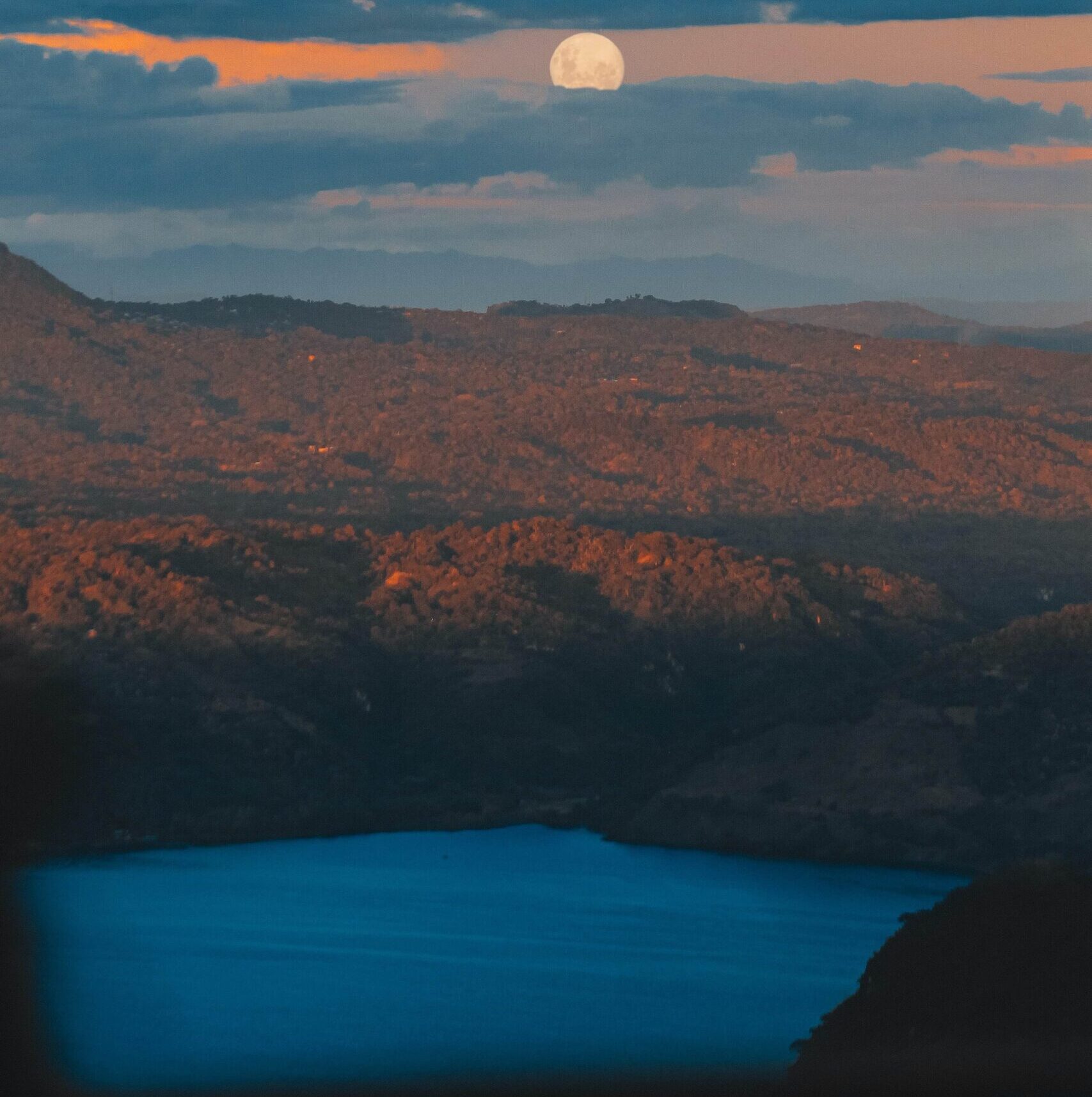
Lake Ilopango
What was once a volcano is now a turquoise expanse of freshwater in central El Salvador. It is popular with divers and boaters because to its elevation of 1,450ft (442m) and surrounding cliffs. Between CE 410 and CE 535, an eruption broke the cone, killing and expelling hundreds of thousands of people for kilometers around. The bowl-like caldera that remained filled to produce Lake Ilopango, which is 28 square miles (72 square kilometers). Travelers are enchanted by its tranquil beauty, while residents dive for fish in waters that drop 787ft (240m) or more.
Playa El Tunco
Welcome to a quirky two-street beach hamlet popular with travelers and surfers – the greatest waves on the pebbly black beaches are early in the morning. When the tide is low, stroll through the charming alleys or see the beach caves. Playa El Tunco is popular with both Salvadorans and tourists, and it is constantly crowded on weekends. Don’t miss the magnificent sunsets every evening (pro tip: the hotel Monkey Lala has an excellent view). The pubs are incredibly energetic at night, and the crowds may get pretty wild.

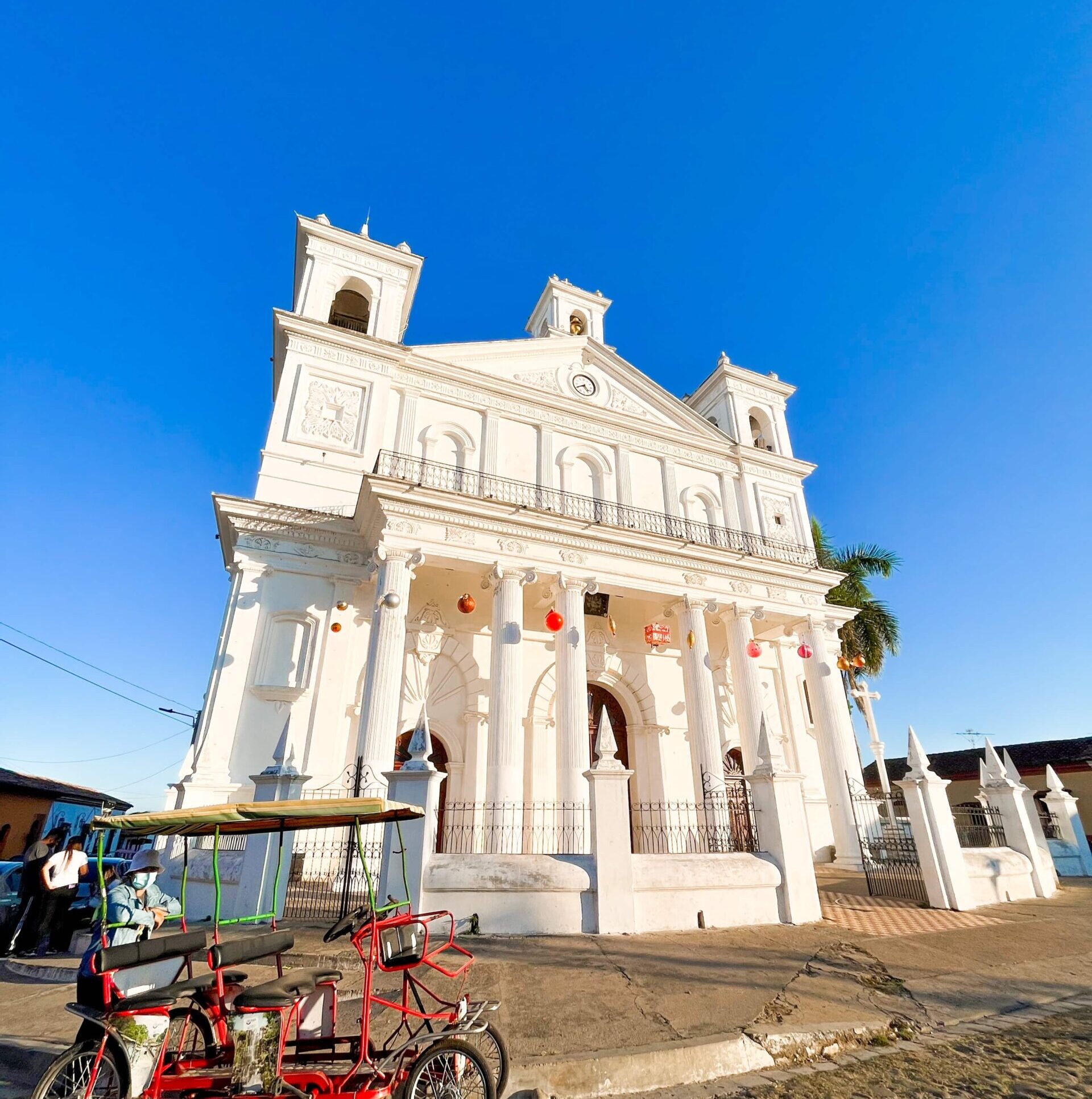
Suchitoto
This historic colonial city is located northeast of the capital, San Salvador. It suffered structural damage during the Civil War (1980-1992), but it is today a superb mountain hideaway and a national cultural attraction, with arts and cuisine events filling the streets on a regular basis. You may stroll around the cobblestone streets, admiring the magnificently preserved Spanish-colonial architecture. Go beyond town to find waterfalls and caverns. Take your binoculars to Lake Suchitlán, where migratory species include the greatest duck concentrations in the country.
7-day Itinerary in El Salvador
Days 1 and 2
Arrive at San Salvador!
Bienvenida!
Welcome to El Salvador. Arrange for your hotel to pick you up, get an authorized taxi or rent a car and head to the charming town of Suchitoto, about an hour north. Take a stroll through its gleaming cobblestone lanes, browsing art galleries and artisan booths before boarding a boat to visit the bird-filled waters of Lago de Suchitlán. Stay at the hotel or accommodation of your choice and dine at Villa Balanza, a restaurant/gallery/war museum.
The next day, go on a tour of the surrounding region, stopping at the peculiar Los Tercios waterfall, bullet-scarred towns, and abandoned rebel barracks.

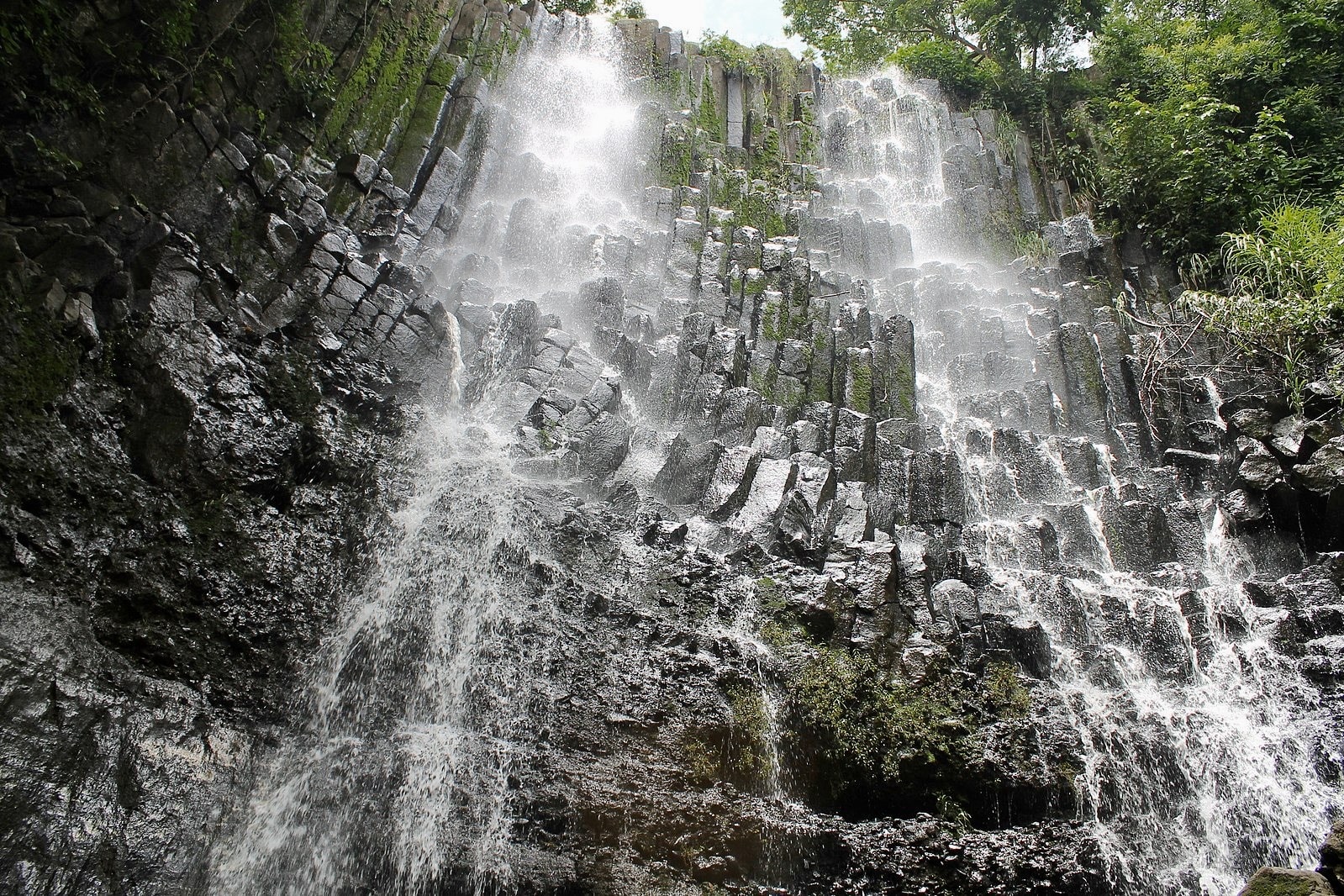
- Backpacker:
- Budget:
- Mid-range:
- Luxury:
When it becomes dark, a foreign city may be twice as dangerous - especially if you don't understand the language and are unfamiliar with the area. There is reason to be alarmed about walking alone in the country, since there is crime recorded in Suchitlán to warrant worry. You can walk safely at day, but avoid walking at night and be alert in crowded areas or unlit alleys or streets. You can always take taxis, if you don't feel comfortable. Be wary of petty crime by taking precautions mentioned in the safety section above.
Day 3
Exploring Ruta de las Flores
The Ruta de las Flores is a cluster of charming tiny communities located approximately 2 hours west of Suchitoto over a 35km (22-mile) length of meandering mountain road. The journey can be completed in a single day with a tour company, hired car, or private cab. Visit Nahuizalco to view the handcrafted furniture, Juayúa to see the black Christ, and Ataco to see some amazing art that you won’t find anywhere else in El Salvador. Lunch may be had at the wonderful garden restaurant Entre Nubes. Return to Suchitoto at the end of the day to get ready for your flight tomorrow.
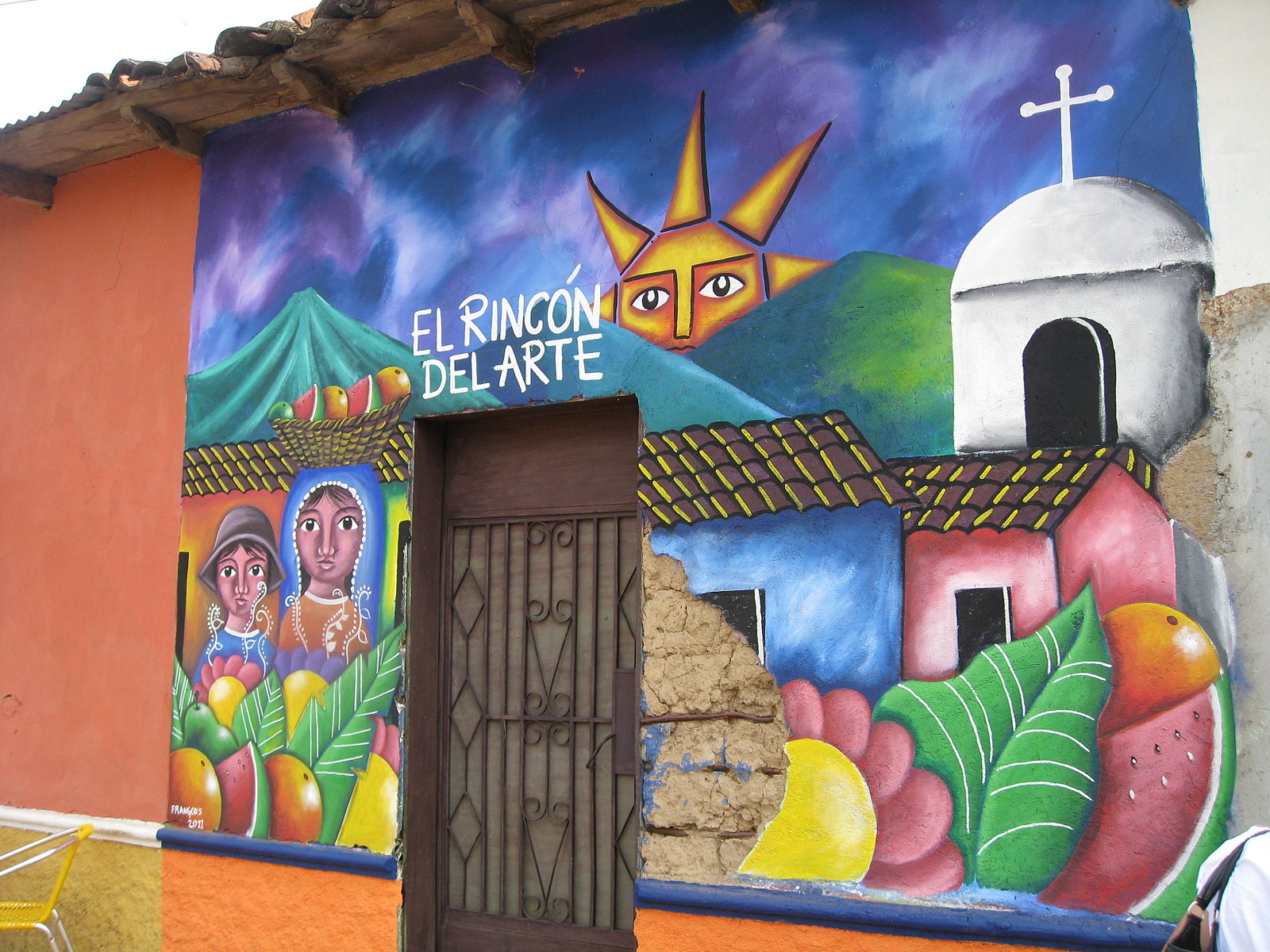
Days 4 to 6
Great Adventures
Montecristo National Park in El Salvador is a forested location that is perfect for individuals who want to reconnect with nature. The forest is a tri-national nature reserve shared by Honduras and Guatemala. All of the attractions at Montecristo National Park are tourism-related and may be completed in a single day. However, due to the distance from San Salvador or Santa Ana, as well as the limited entry times, tourists are more likely to spend a night or two camping at the park.
Hiking to El Trifinio, seeing the wonderful wildlife and flora and seeing the 100-year-old garden are some of Montecristo National Park’s top activities. If you want to stay a night or two at Montecristo National Park, camping is the best and most popular option. The park features three camp sites with ample security. If camping isn’t your style, you can book one of the park’s two cabins for roughly $70 per night, with space for up to 8 people.


- Backpacker:
- Budget:
- Mid-range:
- Luxury:
When it becomes dark, a foreign city may be twice as dangerous - especially if you don't understand the language and are unfamiliar with the area. There is some reason to be alarmed about walking alone in the country, as there is mild crime recorded in San Juan del Sur, to warrant a bit of worry. You can walk safely at day, but avoid walking at night and be alert in crowded areas or unlit alleys or streets. You can always take taxis, if you don't feel comfortable. Be wary of petty crime by taking precautions mentioned in the safety section above.
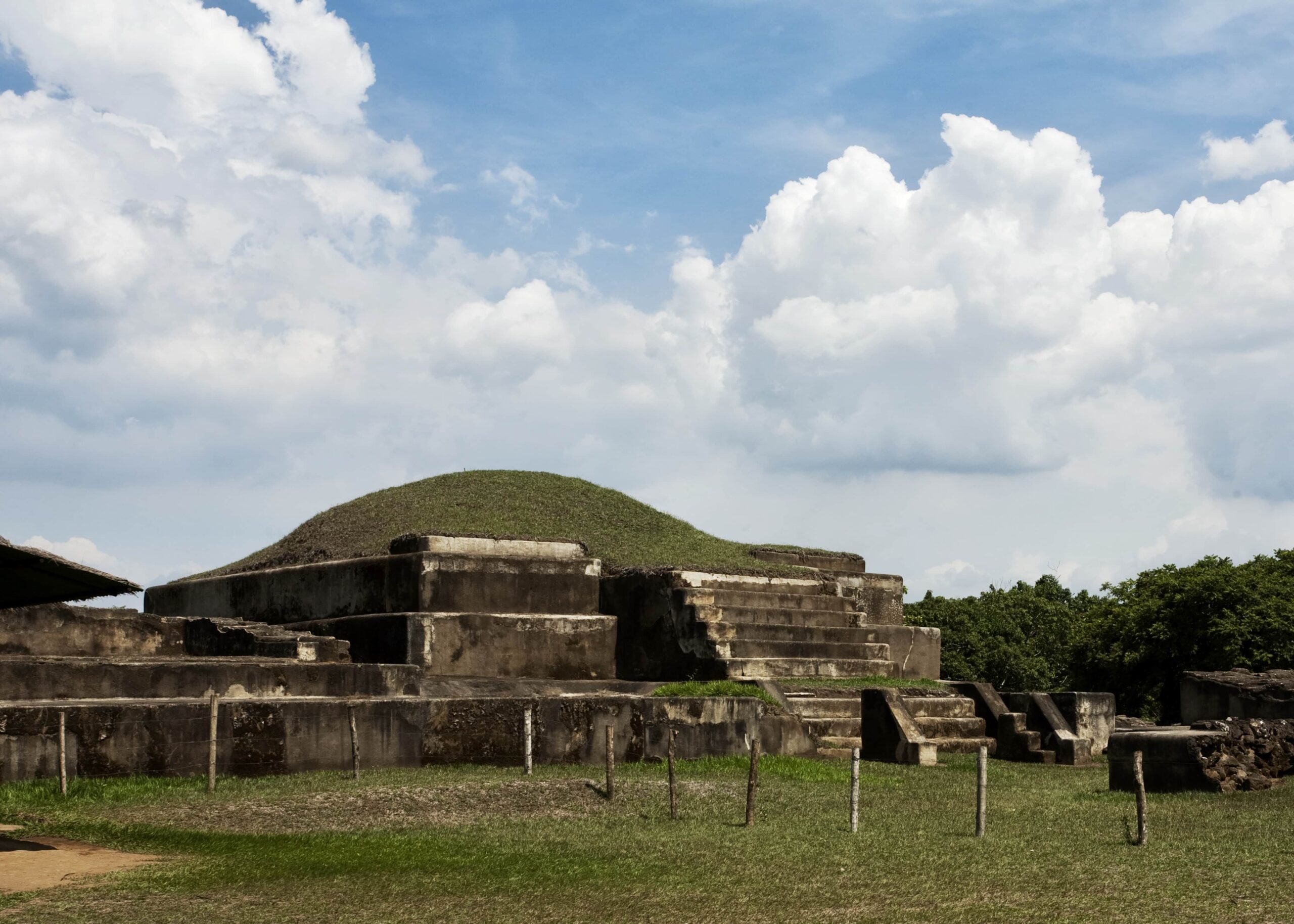

Day 7
Head to San Andrés
This is a pre-Columbian archaeological site that is well worth a visit and hence is among the best things to do in El Salvador. The Acropolis is an elevated plaza with pyramids and homes on the top part of the site. There is also a vast area on the north side with several pyramids, including one shaped like a bell. It’s probable that this location once had a market where commodities were traded.
This is one of the country’s major pre-Hispanic archaeological sites, and it’s only 45 minutes from San Salvador, so it’s a fantastic day trip from San Salvador, and you can get there using uber or chicken buses.
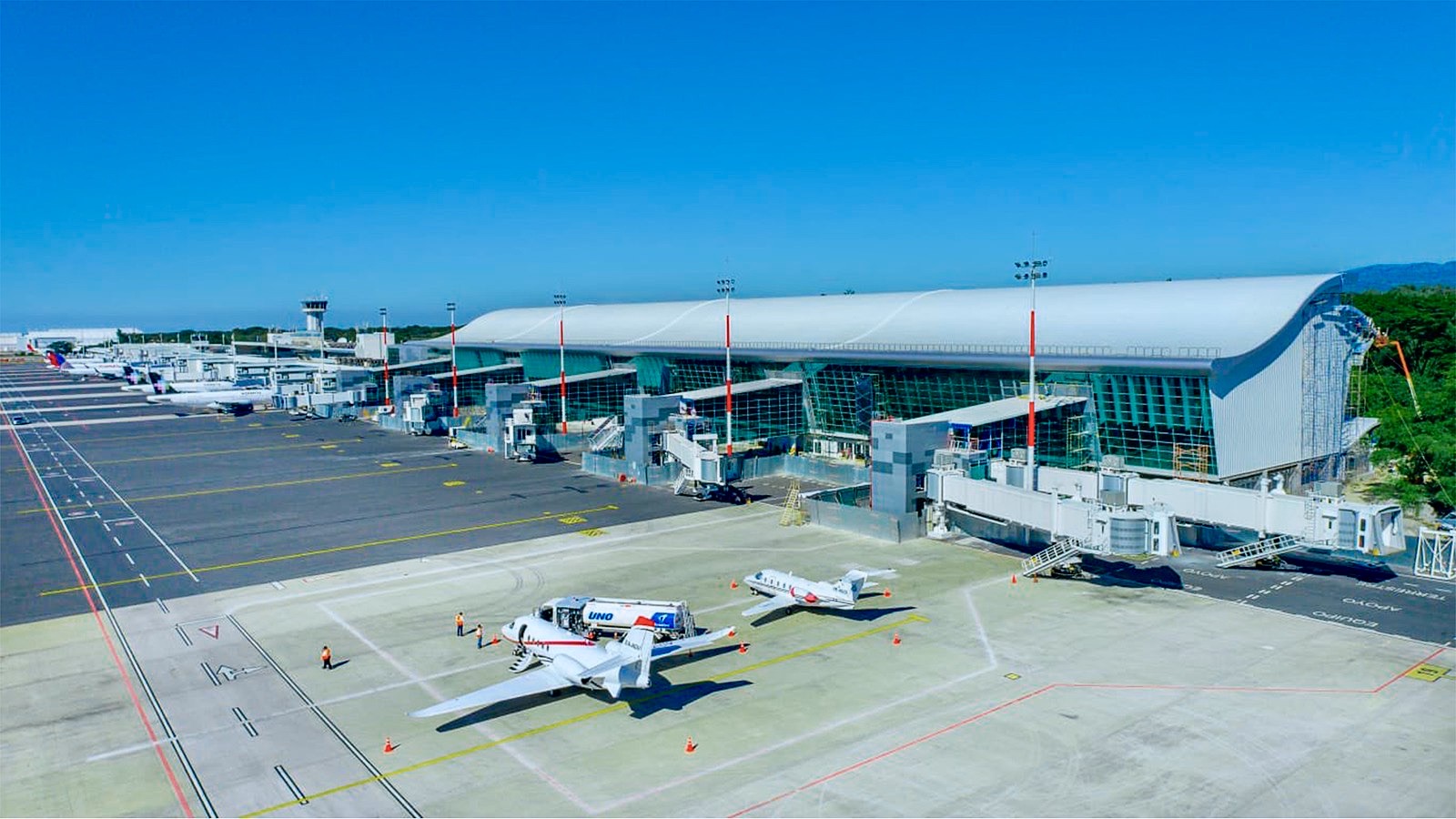
Day 8
Departure Day
If you arrive in San Salvador and have an early flight the next morning, stay in a hotel near the airport. The city center is approximately an hour from the airport.
Say your last goodbyes and head to the Airport!
The Most Popular Food in El Salvador
Salvadorian traditional food is a blend of Native American cuisine from tribes like the Lenca, Pipil, Maya Poqomam, Maya Chorti, Alaguilac, Mixe, and Cacaopera, but mostly Pipil, which bears a Spanish influence. El Salvador’s cuisine is based on corn and beans. Many of the dishes contain maize (corn). Pork and shellfish are also frequently used. Following the Spanish invasion, old world components were introduced.

Pupusas
A popular dish in El Salvador, pupusas are basic maize or rice flour tortillas packed with a variety of flavorful fillings, perfect for breakfast or a quick snack on the road. Fillings for pupusas include cheese, fried beans, pork rinds, and loroco, a local flower. Chicken and shrimp are other popular fillings. This affordable meal is served with Salsa Roja, a salsa of tomatoes and onions with a little heat. It is also suitable for vegetarians with suitable fillings.
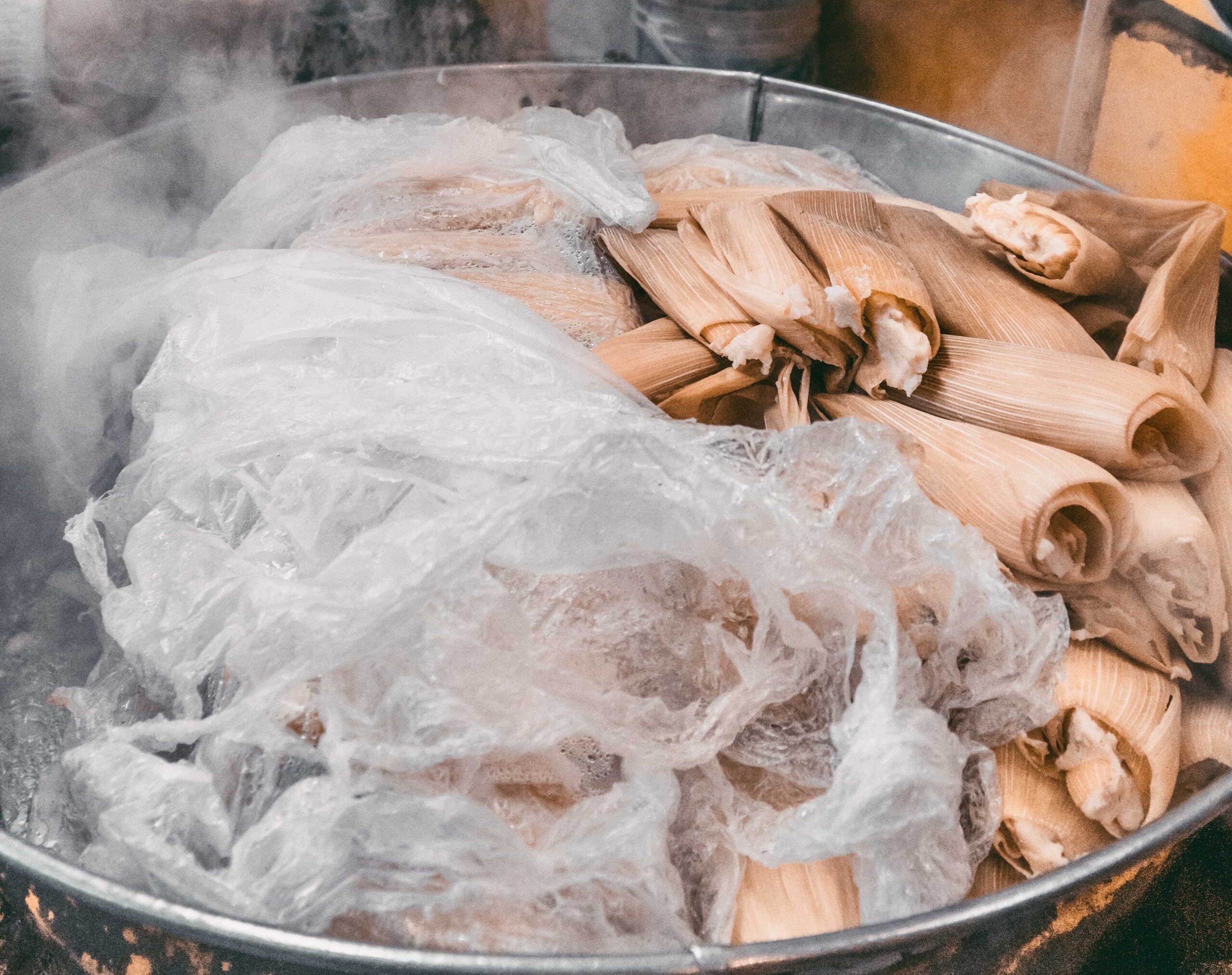
Tamales
Tamales are a filling wrap made from a variety of ingredients like Tamales de Chipilin or Pollo, two simple examples of tamales. This Salvadoran dish is always made with a hot, substantial mixture of maize, a major ingredient such as fried beans or chicken, and spices, then wrapped in a case of plantain leaves. The tamales are then cooked whole to release the flavor, steamed, chilled, and served with salsa.
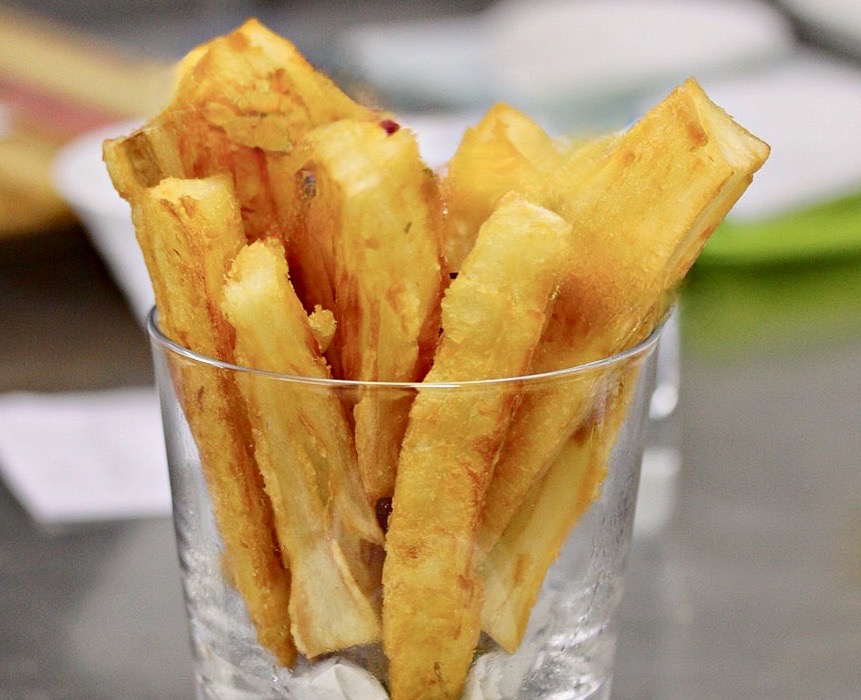
Yuca Frita
Yuca Frita is a dish of deep-fried cassava wedges sliced into thick-cut wedges that is both hearty and delectable. Curtido is an onion, carrot, and fermented cabbage side dish with red pepper and garlic for heat that goes well with the dish. This Salvadoran street meal is also available topped with Chicharron or Pepesca, a rich side of fried sardines.

Churrasco Típico
The beef is marinated in orange juice, oil, chopped onions, and other spices first. The meat is then cooked over an open flame. It comes with fried beans, fried plantains, fresh cheese, grilled veggies, and chirimol on the side or can be eaten as a sandwich. Chirimol is a vinegary vegetable side dish, made with chopped tomatoes, onions, and fresh coriander leaves among other things that makes Churrasco taste even more tasty.

Carne Asada
One of El Salvador’s most famous meat meals is certainly Carne Asada, but as well as all of Central and South America. In El Salvador, the meat is marinated in a glaze of thinly sliced onions, orange juice, oil, and spices before being cooked over an open flame. It is Served with a variety of sides. Rice, casamiento, chirimol, roasted veggies, and tortillas are also popular complements. There are several restaurants in El Salvador that specialize in grilled meat.
What's the Travel Budget for El Salvador?
Flights
- Flights start at roughly $170 from nearby countries. Tickets however on average cost around $550 and can cost way more depending on which class and from which country you depart from.
Accommodation
- Nomad Backpacking style travelers can expect to spend around $220 for a week
- Budget travelers can expect to spend around $360 for a week
- Mid-range travelers can expect to spend around $470 for a week
- Luxury travelers can expect to spend around $850 for a week
Food Budget (Three meals and drinks)
- Nomad Backpacking style travelers can expect to spend around $14 per person per day
- Budget travelers can expect to pay around $24 per person per day
- Mid-range travelers on average would cost $30 to $45 per person per day
- Luxury travelers can expect to pay around $50 to $75 per person per day
Overall Budget Styles (Not including Flights, Tours, Transportation, or Car Rental)
- Nomad Backpacking style travelers can expect to spend roughly $350 for a week
- Budget travelers can expect to spend close to $560 for one person for a week
- Mid-range travelers can expect to spend approximately $850 for one person for a week
- Luxury travelers can expect to spend around $1,400 for one person for a week
Flights
- Flights start at roughly $170 from nearby countries. Tickets however on average cost around $550 and can cost way more depending on which class and from which country you depart from.
Accommodation
- Nomad Backpacking style travelers can expect to spend around $220 for a week
- Budget travelers can expect to spend around $360 for a week
- Mid-range travelers can expect to spend around $470 for a week
- Luxury travelers can expect to spend around $850 for a week
Food Budget (Three meals and drinks)
- Nomad Backpacking style travelers can expect to spend around $14 per person per day
- Budget travelers can expect to pay around $24 per person per day
- Mid-range travelers on average would cost $30 to $45 per person per day
- Luxury travelers can expect to pay around $50 to $75 per person per day
Overall Budget Styles (Not including Flights, Tours, Transportation, or Car Rental)
- Nomad Backpacking style travelers can expect to spend roughly $350 for a week
- Budget travelers can expect to spend close to $560 for one person for a week
- Mid-range travelers can expect to spend approximately $850 for one person for a week
- Luxury travelers can expect to spend around $1,400 for one person for a week
Flights
- Flights start at roughly $170 from nearby countries. Tickets however on average cost around $550 and can cost way more depending on which class and from which country you depart from.
Accommodation
- Nomad Backpacking style travelers can expect to spend around $220 for a week
- Budget travelers can expect to spend around $360 for a week
- Mid-range travelers can expect to spend around $470 for a week
- Luxury travelers can expect to spend around $850 for a week
Food Budget (Three meals and drinks)
- Nomad Backpacking style travelers can expect to spend around $14 per person per day
- Budget travelers can expect to pay around $24 per person per day
- Mid-range travelers on average would cost $30 to $45 per person per day
- Luxury travelers can expect to pay around $50 to $75 per person per day
Overall Budget Styles (Not including Flights, Tours, Transportation, or Car Rental)
- Nomad Backpacking style travelers can expect to spend roughly $350 for a week
- Budget travelers can expect to spend close to $560 for one person for a week
- Mid-range travelers can expect to spend approximately $850 for one person for a week
- Luxury travelers can expect to spend around $1,400 for one person for a week
Flights
- Flights start at roughly $170 from nearby countries. Tickets however on average cost around $550 and can cost way more depending on which class and from which country you depart from.
Accommodation
- Nomad Backpacking style travelers can expect to spend around $220 for a week
- Budget travelers can expect to spend around $360 for a week
- Mid-range travelers can expect to spend around $470 for a week
- Luxury travelers can expect to spend around $850 for a week
Food Budget (Three meals and drinks)
- Nomad Backpacking style travelers can expect to spend around $14 per person per day
- Budget travelers can expect to pay around $24 per person per day
- Mid-range travelers on average would cost $30 to $45 per person per day
- Luxury travelers can expect to pay around $50 to $75 per person per day
Overall Budget Styles (Not including Flights, Tours, Transportation, or Car Rental)
- Nomad Backpacking style travelers can expect to spend roughly $350 for a week
- Budget travelers can expect to spend close to $560 for one person for a week
- Mid-range travelers can expect to spend approximately $850 for one person for a week
- Luxury travelers can expect to spend around $1,400 for one person for a week
If you want to know what to pack, read this list below:
- This is a casual tropical country with warm weather that tends to get moderate rain, dress accordingly
- Raincoat or Light Waterproof Jacket
- Hiking Boots or Sturdy Sneakers (Shoes You Don’t Mind Getting Wet)
- Sunscreen
- Insect Protection – Repellent and Clothing
- Sunglasses and Sun Hat
- Water Shoes
- Beach Towels/Sarong
- Dry Bag
- Money Belt or Cross Bag
- Portable Medical Kit
- Flashlight or Headlamp
- Copies of your passport.
- Get all the needed vaccinations before traveling
- A power bank is a must in any travel.
- Always have some cash with you just in case there are no ATMs and if you are dealing with a business that solely accepts cash
- Get yourself an adapter for your gadgets
- 1 toothbrush
- 1 tube of toothpaste
- 1 razor
- 1 package of dental floss
- 1 small bottle of shampoo
- 1 small bottle of shower gel
- 1 towel
- Deodorant
- Band-Aids
- Hydrocortisone cream
- Antibacterial cream
- Earplugs
- Tylenol
- Hand sanitizer (germs = sick = bad holiday)
- A key or combination lock
- Zip-lock bags
- Plastic bags (great for laundry)
- Universal charger/adaptor
- LifeStraw (A water bottle with a purifier)
- 1 dry shampoo spray & talc powder
- 1 hairbrush
- Makeup you use
- Hairbands & hair clips
- Feminine hygiene products
Clothing For Boys
- 1 pair of jeans or khaki pants
- 1 pair of shorts
- 1 bathing suit
- 5 T-shirts
- 1 long-sleeved T-shirt
- 1 pair of flip-flops
- 1 pair of sneakers
- 6 pairs of socks
- 5 pairs of boxer shorts
Clothing For Girls
- 1 swimsuit
- 1 sarong
- 1 pair of stretchy jeans
- 1 pair of leggings
- 2-3 long-sleeve tops
- 2-3 T-shirts
- 3-4 spaghetti tops
- 1 light cardigan
Want to plan your own trip, here are some of the best resources that can help you
- Skyscanner – They search small websites and budget airlines that larger search sites tend to miss. They are hands down the number one place to start.
- Momondo – This is another favorite flight search engine because they search such a wide variety of sites and airlines. Always check here too.
- Booking.com – The best all-around booking site that constantly provides the most affordable and lowest rates. They have the widest selection of budget accommodation.
- Couchsurfing – This website allows you to stay on people’s couches or spare rooms for free. It’s a great way to save money while meeting locals who can tell you the ins and outs of their city. The site also lists events you can attend to meet people (even if you’re not staying with someone).
- Intrepid Travel – If you want to do group tours, go with Intrepid. They offer good small group tours that use local operators and leave a small environmental footprint.
- Grassroots Volunteering – For volunteering, Grassroots Volunteering compiles a list of good local volunteer organizations that keep the money within the community.
- Get Your Guide – Get Your Guide is a huge online marketplace for tours and excursions. They have tons of tour options available in cities all around the world, including everything from cooking classes, walking tours, street art lessons, and more! It has the world’s largest collection of things to do with more than 30,000 activities in 7500 destinations.
- SafetyWing – Safety Wing offers convenient and affordable plans tailored to digital nomads and long-term travelers. They have cheap monthly plans, great customer service, and an easy-to-use claims process that makes it perfect for those on the road.
- Trip Advisor: Check the reviews and then book your accommodation. TripAdvisor is where you go when you want to compare prices with multiple accommodation providers.
- VRBO: is the main search engine to use when you are looking for a home or apartment rental. It can sometimes be cheaper than hotels and it is the best way to stay in areas that offer a more local feel.
- Hostelworld: With one of the largest databases of hostels in the world, Hostelworld is the go-to site when you are looking for budget accommodation.
- Rome 2 Rio: If you want to see how to get somewhere by plane, train, bus, ferry, or car Rome2Rio lays it all out for you as well as related costs.
- World Nomads Insurance: When traveling you should always have travel insurance. We have found the best bang for your buck is by far World Nomads.
Final Thoughts on El Salvador
With its diverse colonial buildings and heritage, breathtaking and unique landmarks, unbelievable warmness, exciting tunes and dances, and vivid picture-perfect surroundings of forests, pristine beaches great for surfing year-round, and wildlife sighting, El Salvador has a refined and rich heritage that can be seen across the country dating back to at least the 11 AD as suggested by recorded history. A fantastic option for anyone seeking one of the best Central American holiday locations. El Salvador is breathtakingly beautiful, with magnificent national treasures, flora, diverse wildlife, and spectacular scenery for travelers to enjoy. Would you visit El Salvador?
Have you ever been to El Salvador? Please share your thoughts and experiences in the comments area below.